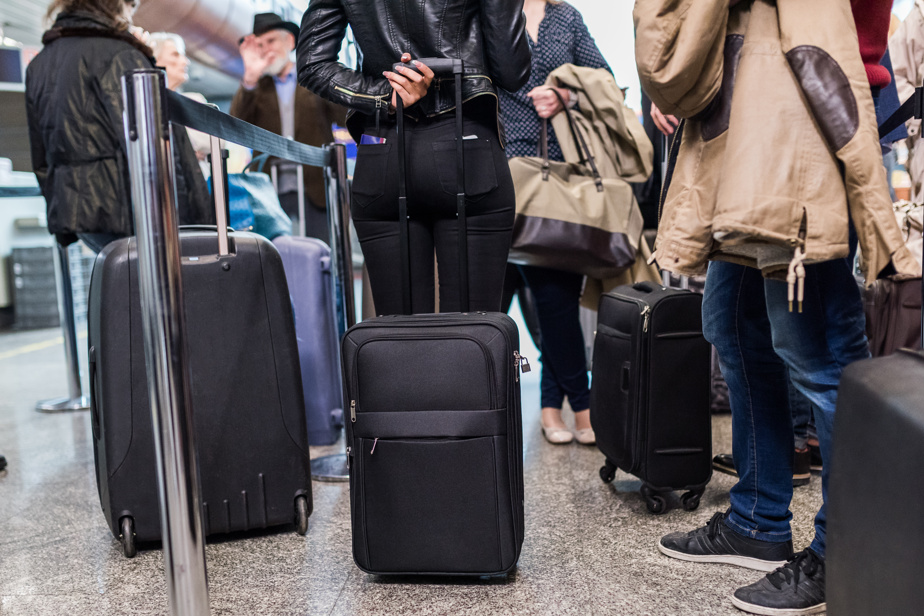It is announced that the plane is ready for boarding. The passengers immediately get up and maneuver to try to board as quickly as possible. Despite the staff’s instructions, it’s a rush.
Inside the plane, it’s a traffic jam. Some get up, others sit down or try to find a place for their gigantic hand luggage. For fluidity, you will have to iron. And air carriers are reluctant to change their ways.
“A kind of routine is settling in,” comments Mehran Ebrahimi, director of the Aeronautics and Civil Aviation Observatory and of the MBA program at the School of Management Sciences at the University of Quebec in Montreal (UQAM). He explains that the staff has mastered this boarding routine and uses well-established practices to resolve any problems that arise.
There are other factors at play, such as the desire to favor members of loyalty programs or holders of Elite category credit cards by allowing them to board earlier, at the risk of blocking passage to the next ones.

PHOTO KARENE-ISABELLE JEAN-BAPTISTE, ARCHIVES SPECIAL COLLABORATION
Mehran Ebrahimi, director of the Aeronautics and Civil Aviation Observatory and of the MBA program at the School of Management Sciences at UQAM
The airline tries to offer some comfort, distinction or perception of distinction to enhance the passenger experience so that they remain loyal.
Mehran Ebrahimi, director of the Aeronautics and Civil Aviation Observatory and of the MBA program at the School of Management Sciences at UQAM
Why do passengers want to get into a narrow metal tube as quickly as possible instead of taking a few extra minutes to lounge in the waiting room? Quite simply to be able to store their hand luggage in the overhead compartment. Because if this luggage does not manage to fit in, it risks, horror, ending up in the hold.
Passengers bring increasingly bulky and heavy hand luggage on board. This trend is notably due to the fact that several carriers impose significant fees for checked baggage. “There is another problem: a higher percentage than usual of lost or damaged luggage,” notes Mr. Ebrahimi. People prefer to compromise not to put luggage in the hold. »
Tests
Over the years, carriers have tried different models to try to ensure some smoothness in the boarding process. After prioritizing passengers who require assistance, as appropriate, and first and business class passengers, passengers at the back of the aircraft may be boarded first. Or we can give priority to passengers seated near the windows. United Airlines caused a surprise recently by choosing the latter model, explaining that it should reduce boarding times by two minutes.
Air Canada is also interested in various boarding methods. “We test different boarding processes from time to time, evaluating time required, customer convenience and other aspects of the airport experience,” said Christophe Hennebelle, Vice President of Corporate Communications. of Air Canada.

PHOTO FRANÇOIS ROY, LA PRESSE ARCHIVES
For around ten years, Air Canada has used a zone system which takes into account the priority statuses of certain passengers and which favors boarding from the rear to the front of the aircraft.
For around ten years, the Canadian carrier has used a zone system which takes into account the priority statuses of certain passengers and which favors boarding from the rear to the front of the aircraft. This is a method favored by several other carriers, such as Air Transat.
But it is not perfect, recognizes Bernard Côté, director of marketing and public relations at Transat. “Many passengers do not respect the group number indicated on their boarding pass despite announcements asking them to remain seated until their number is called,” he laments. This often causes traffic jams at the gates during boarding, slowing down the process. »
He adds, however, that Air Transat does not intend to implement a new boarding system in the near future.
In the United States, studies have been carried out to evaluate the effectiveness of different methods. The most effective? Let people sit wherever they want.
But passengers hate this concept and airlines don’t want to give up the fees they charge for seat selection.
Whatever method you choose, fluidity is not guaranteed. “I can very easily put together a model for you, set parameters, use an algorithm, do a simulation, I can give you the most efficient way to do it,” says Mr. Ebrahimi. But very quickly, your theoretical model is confronted with problematic questions. »
It could be two people who disagree about a seat, or a high number of people in wheelchairs, or an unusual number of unaccompanied minors, or passengers who don’t respect zones… and all the The scaffolding collapses.
What comes into play then is the leadership of the staff, their authority, believes Mr. Ebrahimi. “I had an experience in Greece where the staff was completely overwhelmed. It made an impossible mess. »
